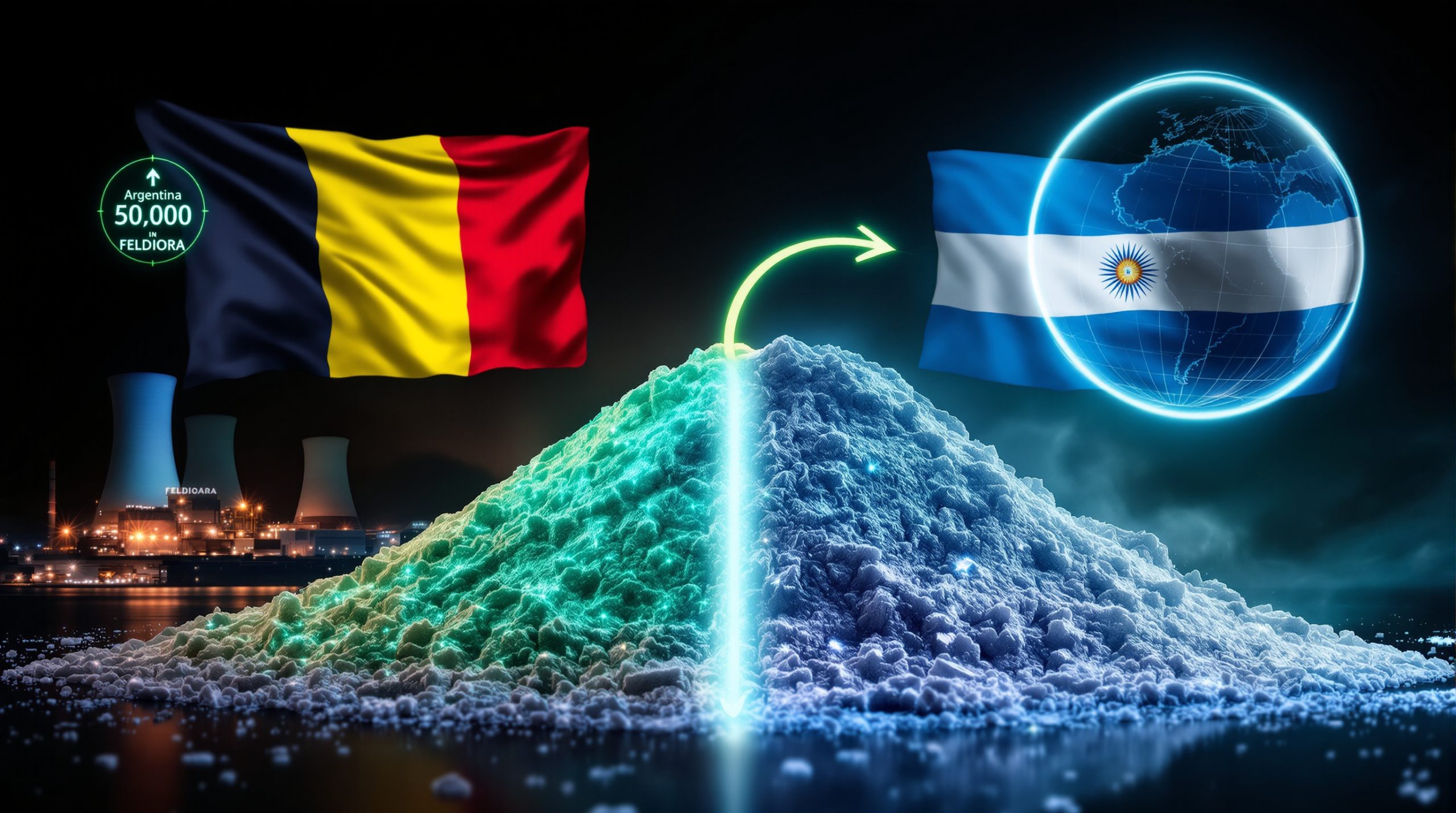The mining industry is undergoing transformation as Ex-Glencore Lundin execs launch Moranda Metals. The arrival of Moranda Metals heralds a shift in how mining assets are evaluated and acquired. Two experienced leaders back the firm, promising fresh perspectives and robust financial discipline. Their vision builds on decades of industry knowledge.
Christopher Kololian, now CEO, brings financial expertise from Lundin Gold. While at Lundin, he managed the $1.4 billion Fruta del Norte project in Ecuador. His experience supplements the team’s capability to seize emerging opportunities. His background enhances the understanding of navigating mining investments strategies in today’s market.
Matthew Rowlinson, taking the role of Chair, carries his past experience as head of copper business development at Glencore. His work boosted Glencore’s copper output, contributing about 12% of the global mined supply. Under his stewardship, Moranda aims for strategic acquisitions. This catalyst further supports the recent Ex-Glencore Lundin execs launch Moranda Metals venture.
Moranda Metals' Business Strategy focuses on targeted acquisitions within a defined price range. The company seeks assets in gold, silver, and copper across the Americas. Their target is enterprises valued between $200 million and $500 million. This mid-tier space offers ample growth potential while bypassing the billion-dollar competition.
K Ololian asserts that "$15 billion in dry powder creates acquisition opportunities." This capital availability enables Moranda to partner with established mining firms. With clear criteria for resource and infrastructure scalability, the company examines assets under economic stress tests. Their outlook echoes trends found in mining and finance industry predictions for 2025 published recently.
The company conducts its evaluations based on sustainable margins and strategic scale. Projects with a minimum of 500,000 tonnes of copper or 2 million ounces of gold reserves are preferential. This rigorous approach is part of a broader industry shift encouraging commodity cycle shift and investment opportunities in volatile markets.
Moranda Metals diligently applies a mix of equity investments and debt financing to secure controlling stakes. This balanced funding structure ensures operational control while maintaining flexibility. Moreover, the firm has embraced industry partnerships, such as those highlighted by industry leaders in recent reports. In one notable instance, industry leaders launch company to pursue promising acquisitions in an increasingly competitive environment.
Capital Availability in the Mining Investment Space is at an all-time high. Analysts estimate roughly $15 billion being held by specialist private equity, with $4 billion coming exclusively from mining funds. This pool of investment capital has significantly increased interest from institutional investors. Private equity mining funds have grown by 22% year-over-year in 2024, creating a fertile environment for Moranda’s ambitions.
Around 70% of these funds target exits within 3-5 years. This short-term orientation contrasts with traditional mining development cycles. It encourages rapid value capture in a market where undersupply issues exist. For further perspectives, explore global commodities market insights and investment opportunities that detail this evolving landscape.
The surge in mined capital coincides with undervalued mining equities. Public markets appear cautious despite copper’s impressive 40% price rise since 2022. Investors find opportunities where market sentiment undervalues asset potential. With robust funding and clear strategies, firms such as Moranda Metals are poised to capitalise on these market inefficiencies.
Why do the founders see a "generational opportunity" in mining? Gold prices recently breached $3,000 per ounce, while mining equities traded around 0.8 times net asset value. This represents a significant departure from historic averages. Kololian describes decades of underinvestment as the root cause of these anomalies, framing the scenario where Ex-Glencore Lundin execs launch Moranda Metals as a timely response.
The copper market illustrates this opportunity further. Analysts, including those from the CRU Group, forecast a supply deficit of 8.5 million tonnes by 2030. This shortfall is exacerbated by minimal exploration over the past decade, prompting strategic moves. Moreover, the shift in resource allocation aligns with mining's crucial role in the clean energy transition, underscoring the action required.
Several market indicators bolster Moranda Metals' strategy. Consolidation trends, such as mega-deals like BHP’s $39 billion takeover of Anglo American, emphasise the present market dynamism. Furthermore, current exploration spending lags by $12 billion compared to 2012 levels. Both factors support the notion that ambitious projects can thrive even in constrained financial scenarios.
Types of Mining Assets Moranda Metals Is Targeting are clearly defined. The company prioritises gold, silver, and copper properties with strong fundamentals. Assets are expected to show a mine life exceeding 10 years and all-in sustaining costs of no more than $900 per ounce for gold. These parameters ensure that assets offer both longevity and economic feasibility across market cycles.
For copper, the firm focuses on deposits with grades of at least 0.5% for open-pit projects and 1.5% for underground operations. Projects must deliver a minimum of 20% internal rate of return under long-term price conditions. This stringent metric is applied to ensure that acquisitions deliver sustainable financial performance.
Moranda Metals’ approach includes examining projects similar to established complexes. For instance, the Cortez Complex in Nevada, with its 16 million ounces reserve, is an exemplar. The company is equally interested in assets that benefit from restructuring and rebranding efforts, providing room for accelerated value realisation. Strategic flexibility is thus a key driver behind their acquisition plans.
How Does Moranda Metals Fit into Current Mining Industry Trends? In 2024, mining mergers and acquisitions reached an impressive $58 billion—an increase of 17% year-over-year. This data reflects robust demand and confidence in the mining sector. Strong commodity prices are fuelling strategic moves, and Moranda Metals is positioned as a key player amid this activity.
Gold’s recent run to $3,000 an ounce highlights underlying economic uncertainties. As Kololian opines, the spike in gold prices reflects monetary instability alongside heightened industrial demand. Energy transition metals are attracting notable investment, with 68% of exploration budgets dedicated to them in 2024. Additionally, mining shell company reports have noted similar trends driving market consolidation.
Operating across the Americas, Moranda Metals capitalises on stable regulatory environments and promising geological regions. These factors minimise geopolitical risks while maximising access to high-potential projects. With careful planning and a clear strategic focus, the company is set to thrive even amidst complex market dynamics. The vision of Ex-Glencore Lundin execs launch Moranda Metals reiterates their commitment to reshaping the mining investment landscape.
Frequently Asked Questions About Moranda Metals
When was Moranda Metals launched?
Moranda Metals officially launched on 18 February 2025 during a period marked by high commodity prices and active market consolidation. This timing enabled the company to carve out a distinct niche among mid-tier mining players.
What regions in the Americas is Moranda targeting?
The company is focused on established mining jurisdictions. Key regions include Canada, the United States, Mexico, Peru, and Chile. These areas offer stable environments along with substantial geological potential for new investments.
How does Moranda plan to structure its acquisitions?
The firm employs flexible, transaction-specific structures. They seek controlling stakes of 51-75% via a combination of equity and debt financing, ensuring both strategic control and financial agility.
What is the timeline for completing initial acquisitions?
Moranda Metals aims to finalise its first acquisition within 6-18 months. This timeframe allows for rigorous due diligence amid intense industry competition, ensuring sustainable growth.
How does Moranda differentiate itself from other mining vehicles?
Their edge lies in their leadership’s extensive operational experience and a focused asset strategy. By targeting gold, silver, and copper projects with robust fundamentals, they create multiple budget-friendly entry points for strategic investments.
What criteria define sustainable operations for Moranda?
The company prioritises assets with strong environmental, community, and governance standards. This focus underlines a commitment to international ESG benchmarks, which are increasingly significant in mining valuations.
- Rapid capital allocation
- Emphasis on sustainable margins
- Strategic focus on mid-tier acquisitions
- Flexibility in financing structures
Ex-Glencore Lundin execs launch Moranda Metals represents a fresh approach to tapping into global market shifts. Their vision and strategy align with the need for agile investments in an era of renewed focus on sustainable resource development.
Ready to Discover the Next Major Mining Opportunity Before the Market?
Don't miss out on significant ASX mineral discoveries like those that transformed De Grey Mining and WA1 Resources. Discovery Alert's proprietary Discovery IQ model provides real-time notifications when major discoveries are announced, giving you a crucial market advantage. Explore historic returns of transformative discoveries at https://discoveryalert.com.au/news/discoveries/ and position yourself ahead of the market.




